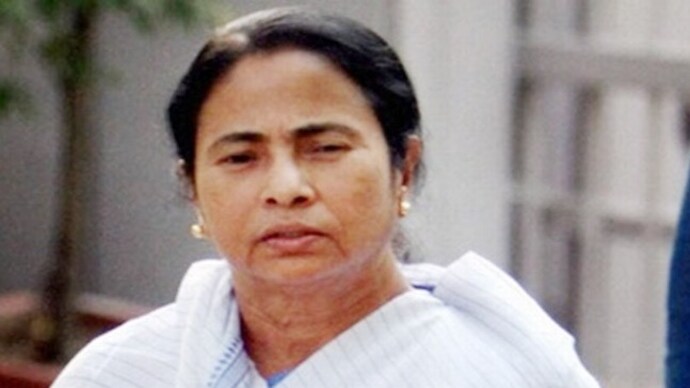Mamata Banerjee's Muharram, Durga Puja plan: Law and order issue or appeasement politics?
After winning a second term in 2016, Mamata Banerjee government has been facing serious law and order challenge on account of a series of communal clashes. Did she try to avoid another communal flare up with her Durga idol immersion order?

Mamata Banerjee, the combative West Bengal Chief Minister has just received a major setback from the Calcutta High Court on the question of governance. The high court struck down the West Bengal government order notifying separate timings for idol immersion during Durga Puja and Taazia procession as part Muharram.
Celebrated and observed in accordance with lunar calendar, Durga Puja and Muharram fall on consecutive days. This year Vijaya Dashami will be celebrated on September 30 while Muharram will be observed the following day on October 1. The high court has allowed idol immersion on both days directing the Mamata Banerjee government to specify separate routes for both.
Last year, dates for idol immersion and Muharram were on October 11 and 12. The Mamata government had notified similar orders. But, West Bengal witnessed several clashes between the members of the two religious communities.
Some of the reports said that there were at least 12 incidents of clashes between the groups going for idol immersion and those taking out Taazia procession last year. This leaves the scope for the state government to be apprehensive of communal trouble when two religious events take place this year.
COMMUNAL VIOLENCE UNDER MAMATA 2.0
Mamata Banerjee stormed to power in 2011in West Bengal dismantling the Left bastion of nearly four decades on the back of Singur and Nandigram movements with the poll cries of Maa, Maati and Maanus (Mother, Soil and People). She retained power in 2016 but seemed to have lost the plot as the year witnessed a spate of communal clashes.
Kaliachak or Malda riots of 2016 were the first major communal clash that erupted in West Bengal last year. The riots broke out when some Muslim organisations led protests against Hindu Mahasabha leader Kamlesh Tiwari's controversial comments against Prophet Mohammad in December 2015.
Though, Mamata government officially denied that the violence was of communal nature stating that the clashes took place between the BSF and the locals of the area. But, ground reports told a different story. The state administration must have known the ground situation.
Another Facebook post led to communal violence in Illambazar in March last year. One person died and three others were critically injured in violence and police action.
CLASHES DURING MUHARRAM, IDOL IMMERSION
Clashes were witnessed at many places last year on October 12 - the day of Muharram. At Hazinagar, two groups clashed as they took out Muharram and idol immersion processions. Several people were reported injured from Hazinagar while around 30 homes and shops were damaged.
Communal tension spread to Howrah the next day. Dhulagarh locality remained tense for few more days as rioters attacked one another and also clashed with police. Houses were burnt and shops vandalised. Around 25 people were arrested to bring normalcy in the area.
Hindu-Muslim clashes were also reported from Jalangi on the outskirts of Kolkata, West Midnapore - where curfew was imposed over Muharram procession and burning of the effigy of Ravana, Burdwan and some other places.
2017 IS NOT GOOD EITHER
This year has not been good for Mamata Banerjee government as communal clashes continued to be reported from several places in West Bengal. In January itself, Alampur and Metiabruz (both in South 24 Parganas) witnessed communal clashes.
In July, Mamata Banerjee government found it tough to bring normalcy in Basirhat sub-division of North 24 Parganas district. Several places including Baduria, Keosha market, Banshtala, Ramchandrapur and Tentulia remained tense for several days over a Facebook post.
Mamata Banerjee government had to suspend internet services in the region besides increasing police presence substantially. She was blamed for the repeated communal flare ups in the state with BJP accusing her of appeasement politics.
Mamata government has been under pressure to control communal violence. The religious events of Vijaya Dashami and Muharram on consecutive days presented another tough challenge for the Mamata government.
THE MUHARRAM ORDER
With a streak of communal violence in the state - which is an obvious reflection of her government's inability to maintain law and order, Mamata Banerjee on August 23 announced the decision to make separate timings for idol immersion and Muharram procession.
Addressing the Durga Puja committees at the Netaji Indoor Stadium in Kolkata, Mamata Banerjee had specified that idol immersions would be held till 6 pm on Dashami, September 30 while Muharram procession would be taken out on the next day, October 1.
She announced that there would be no idol immersion on Muharram day. The idol immersion was to resume on October 2 and continue till October 4.
Her announcement seemed to emanate from the ground understanding of the situation that the overzealous members of the two communities tend to cross limits of law during religious functions and that the West Bengal police was not capable of adequate handling of the communal situation.
The West Bengal government's notification for separate timings for idol immersion and Muharram procession seemed to be based on pragmatism, not idealism. It might not have necessarily been appeasement politics that Mamata Banerjee has not shied away from resorting to.
